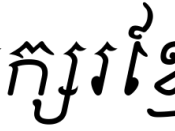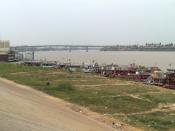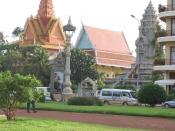The chocolate colored waters of the Tonle Sap River, one of the Indochina's richest sources of freshwater fish. Along the river's margins, fishing villages and pagodas melt into landscape. Fishermen are slinging their nets in the river in search of that day's catch.
Little has changed along the crucial lifeline of Cambodia despite a turbulent history of more then seven decades of French colonial rule, an experiment with independence that culminated in a fierce restructuring of a society under the Khmer Rouge, a decade-long Vietnamese occupation and, at the close of the 20th century and the dawn of the 21st, a delicate effort to consolidate peace and stability.
The ideal months to be in Cambodia are December and January, when humidity is bearable, temperatures are cooler and it's unlikely to rain. From February onwards it starts getting pretty hot, and April is unbearably so. The wet season (from May to October), though very soggy, can be a good time to visit Angkor, as the moats will be full and the foliage lush - but steer clear of the northeast regions during those months, as the going gets pretty tough when the tracks are waterlogged.
The country's biggest festival, Bon Om Tuk, is held in early November, and is well worth catching.
Lunar New Year is celebrated by ethnic Chinese and Vietnamese in late January or early February. The Khmer New Year celebrations bring the country to a standstill for three days in mid-April - a fair amount of water and talcum powder gets thrown around at this time, so it's a lively but noncontemplative time to visit. Chat Preah Nengkal, the Royal Ploughing Festival, takes place near the Royal Palace in Phnom Penh in early May. The Khmer calendar's most important festival is Bon Om Tuk, celebrating the...


